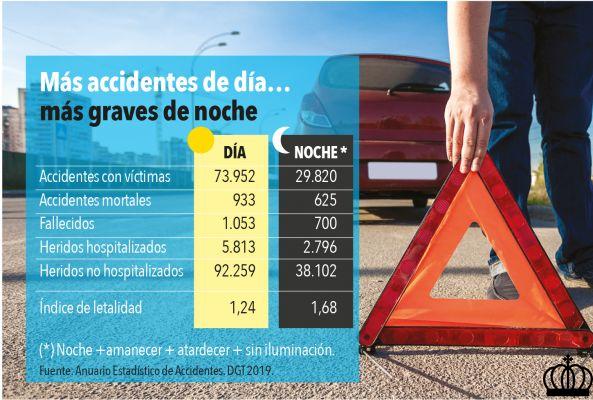
Driving at night can be a challenging and dangerous experience if proper precautions are not taken. Lack of natural light and the presence of other vehicles with bright lights can hinder visibility and increase the risk of accidents. In this article, we'll provide you with information on night driving rules and tips, including the proper use of vehicle lights.
Night driving rules
To ensure safety when driving at night, it is important to follow the established traffic rules. These standards include:
- Respect speed limits: Driving at an appropriate speed is essential to have control of the vehicle and to be able to react to any unforeseen event.
- Maintain a safe distance: Leaving enough space between your vehicle and the one in front of you will give you more time to stop in an emergency.
- Do not drive under the influence of alcohol or drugs: These substances can negatively affect your driving skills, especially at night.
- Use the seat belt: The seat belt is your best ally in the event of an accident, so make sure you fasten it correctly.
Proper use of vehicle lights
Vehicle lights are essential for safe driving at night. Here we explain how to use them correctly:
Front lights
Headlights are essential to illuminate the road and alert other drivers to your presence. Be sure to:
- Turn on your headlights at dusk or when visibility is reduced.
- Use low beams in urban areas and high beams on clear roads.
- Adjust the angle of your headlights to avoid dazzling other drivers.
Taillights
Taillights are important for other drivers to see you in the dark. Follow these recommendations:
- Make sure the taillights are in good condition and working properly.
- Use your brake lights when slowing down or stopping.
- Turn on the emergency lights in case of breakdown or accident.
Blinking lights
Flashing lights are useful for indicating a change of direction or warning other drivers of a dangerous situation. Remember:
- Use your blinkers when changing lanes or turning at an intersection.
- Turn on your emergency flashers in the event of a sudden stop.
Frequent questions
1. Is it mandatory to turn on the vehicle's lights at night?
Yes, it is mandatory to turn on the vehicle's lights at dusk or when visibility is reduced. This is to ensure your safety and that of other drivers on the road.
2. What should I do if I am dazzled by the lights of another vehicle?
If you are blinded by the lights of another vehicle, try to remain calm and do not look directly into the lights. You can reduce the intensity of the glare by looking to the right side of the road and using the lines of the road as a reference.
Conclusion
Driving at night requires extra caution and attention due to the lack of natural light. Follow the established traffic rules and use the vehicle's lights correctly to guarantee your safety and that of other drivers on the road. Remember that visibility is essential, so keep your lights in good condition and adjust their angle to avoid glare. Driving at night can be challenging, but if you follow these tips, you'll be able to do it safely.
We hope this article has been useful to you. If you have any questions or comments, feel free to leave them below. We would love to hear your opinion!
Until next time!


























